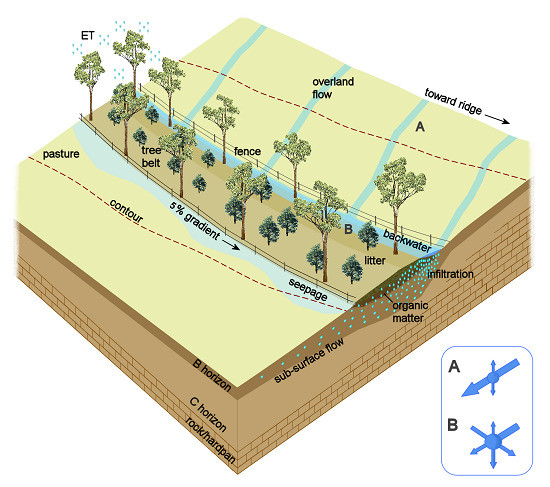Modelling the Potential of Integrated Vegetation Bands (IVB) to Retain Stormwater Runoff on Steep Hillslopes of Southeast Queensland, Australia
Abstract
Share and Cite
Ryan, J.G.; McAlpine, C.A.; Ludwig, J.A.; Callow, J.N. Modelling the Potential of Integrated Vegetation Bands (IVB) to Retain Stormwater Runoff on Steep Hillslopes of Southeast Queensland, Australia. Land 2015, 4, 711-736. https://doi.org/10.3390/land4030711
Ryan JG, McAlpine CA, Ludwig JA, Callow JN. Modelling the Potential of Integrated Vegetation Bands (IVB) to Retain Stormwater Runoff on Steep Hillslopes of Southeast Queensland, Australia. Land. 2015; 4(3):711-736. https://doi.org/10.3390/land4030711
Chicago/Turabian StyleRyan, Justin G., Clive A. McAlpine, John A. Ludwig, and John N. Callow. 2015. "Modelling the Potential of Integrated Vegetation Bands (IVB) to Retain Stormwater Runoff on Steep Hillslopes of Southeast Queensland, Australia" Land 4, no. 3: 711-736. https://doi.org/10.3390/land4030711
APA StyleRyan, J. G., McAlpine, C. A., Ludwig, J. A., & Callow, J. N. (2015). Modelling the Potential of Integrated Vegetation Bands (IVB) to Retain Stormwater Runoff on Steep Hillslopes of Southeast Queensland, Australia. Land, 4(3), 711-736. https://doi.org/10.3390/land4030711






